SAP Supply Chain Planning
Filter By
Browse By
- SAP Analytics and AI
- SAP Application Development and Integration
- All SAP Application Development and Integration
- SAP ABAP
- SAP ABAP Development Tools
- SAP ABAP Test Cockpit
- SAP API Management
- SAP BAPI
- SAP Basis
- SAP BRF
- SAP Business Application Studio
- SAP CMS
- SAP Design Studio
- SAP Development Tools
- SAP DevOps
- SAP EAI
- SAP EDI
- SAP Extension Suite
- SAP Fiori
- SAP Fiori Elements
- SAP Integration Suite
- SAP Low Code Application Development
- SAP Low Code Automation
- SAP Netweaver
- SAP Release Management
- SAP UI5
- SAP Web Application Server
- SAP Web IDE
- SAP Business Process Management
- SAP Center of Excellence
- SAP CIO
- SAP Customer Experience
- SAP Data and Data Management
- All SAP Data and Data Management
- SAP BW
- SAP BW/4HANA
- SAP Crystal Reporting
- SAP Data Archiving
- SAP Data Center
- SAP Data Governance
- SAP Data Integration
- SAP Data Migration
- SAP Data Quality
- SAP Data Services
- SAP Data Strategy
- SAP Data Visualization
- SAP Data Warehouse Cloud
- SAP DMS
- SAP Document Control
- SAP EIM
- SAP ETL
- SAP ETL Tools
- SAP HANA
- SAP HANA Administration
- SAP HANA Deployment Infrastructure
- SAP HANA Studio
- SAP Master Data
- SAP Master Data Governance
- SAP MDM
- SAP Enterprise Architect
- SAP Enterprise Asset Management
- SAP ERP
- SAP Finance
- All SAP Finance
- SAP Accounting
- SAP AR AP
- SAP Asset Accounting
- SAP Billing Systems
- SAP BPC
- SAP BRIM
- SAP Cash Management
- SAP Central Finance
- SAP Controlling
- SAP COPA
- SAP Cost Center Accounting
- SAP e-invoicing
- SAP FICO
- SAP Finance Automation
- SAP Financial Closing Cockpit
- SAP Financial Consolidation
- SAP Financial Planning
- SAP FX Risk
- SAP General Ledger
- SAP Global Tax Management
- SAP Hyperion
- SAP Order to Cash
- SAP Payment Processing
- SAP Profitability Analysis
- SAP Rebate Management
- SAP S/4HANA Finance
- SAP Universal Journal
- SAP Governance Risk and Compliance
- SAP Human Capital Management
- SAP Intelligent Technologies
- SAP Platform and Technology
- All SAP Platform and Technology
- SAP Business Technology Platform
- SAP Cloud Connector
- SAP Cloud Integration Platform
- SAP Cloud Migration
- SAP Cloud Platform
- SAP Cloud Providers
- SAP Cloud Strategy
- SAP Container Platform
- SAP Digital Asset Management
- SAP Digital Integration Hub
- SAP Digital Signature
- SAP HANA Enterprise Cloud
- SAP HEC
- SAP Hyperscalers
- SAP Infrastructure
- SAP Messaging
- SAP Smart Forms
- SAP Quality and Testing
- SAP Security
- SAP Spend Management
- SAP Supply Chain Management
- All SAP Supply Chain Management
- SAP APO
- SAP Asset Management
- SAP Business Network
- SAP Digital Manufacturing Cloud
- SAP Digital Twin
- SAP EWM
- SAP IBP
- SAP Inventory Management
- SAP Label Printing
- SAP Logistics
- SAP Manufacturing
- SAP Manufacturing Automation
- SAP MES
- SAP MII
- SAP MM
- SAP MRO
- SAP MRP
- SAP Order Management
- SAP Plant Maintenance
- SAP PLM
- SAP Production Planning
- SAP S&OP
- SAP SD
- SAP SPM
- SAP Supply Chain Planning
- SAP Track and Trace
- SAP Transportation Management
- SAP System Administration
Supply Chain Management: SAP Supply Chain Planning
The art of orchestrating supply chain planning can be intricate. Unforeseen changes in supply, demand, and market changes are a test in agility. The ability to synchronize planning for sustainable growth is the key to building a resilient supply chain.
Supply Chain Planning Defined
Supply chain planning (SCP) is a forward-looking process. It is coordinating assets to optimize the delivery of goods, services, and information from suppliers to consumers. Organizations can leverage solutions to help navigate the complexities of planning and orchestrating supply chain operations flawlessly. SAP Integrated Business Planning (IBP) is powered by SAP S/4HANA memory and is a cloud-based planning software for supply chain management. IBP is a process for aligning a company’s business goals across operational functional areas.
Supply Chain Management: SAP Supply Chain Planning
The art of orchestrating supply chain planning can be intricate. Unforeseen changes in supply, demand, and market changes are a test in agility. The ability to synchronize planning for sustainable growth is the key to building a resilient supply chain.
Supply Chain Planning Defined
Supply chain planning (SCP) is a forward-looking process. It is coordinating assets to optimize the delivery of goods, services, and information from suppliers to consumers. Organizations can leverage solutions to help navigate the complexities of planning and orchestrating supply chain operations flawlessly. SAP Integrated Business Planning (IBP) is powered by SAP S/4HANA memory and is a cloud-based planning software for supply chain management. IBP is a process for aligning a company’s business goals across operational functional areas.
Key integration elements are:
- Supply and demand
- Finance and Operations
- Functions and business processes
- Strategy outcomes
- Non-financial measures
- Cash flow, costs, and revenues.
A structured process that comes from an IBP approach enables companies to make better informed and fact-based decisions. It provides planning, what-if scenario capabilities, and real-time demand commitments, considering constraints. Increased visibility enables companies to incorporate insights from supply chain projections, financial projects, and strategic plans. There are unmatched benefits of IBP for SAP Supply Chain Planning, like optimization of logistics, improved cross-functional collaboration, planning agility, risk mitigation, and improved forecast accuracy.
SAP Supply Chain Planning yields several benefits:
- Decreased costs
- Increased profits
- Reduction in delays
- Improved efficiency
- Increase in output
- Better cooperation.
Vendor partners that can offer software solutions or operational intelligence include – SAP, Reveal or Gib.
Key Considerations for SAPinsiders are:
- Video Q&A with Eric Jones from GIB on Connecting the Dots Between Supply Chain Planning and Execution. Learn how to tame many supply chain complexities with end-to-end -supply chain solutions by watching this video. The discussion gives a perspective on why supply chain planning tools are an imperative in today’s highly complex supply chains.
- Demand Planning Alerts Increase the Accuracy of your Forecasts. David Ducray explains that demand planners are often faced with converting large amounts of data into an accurate forecast. Review different ways to spot trends and errors in data by using alerts to help you create a more accurate forecast. Allow planners the ability to manage by exception.
- Meeting Demand with a Constrained Supply Using Product Allocation in SAP APO Global ATP. Alok Jaiswal reviews the process flow of how product allocation can be used in SAP Advanced Planning and Optimization (SAP APO). This utilizes global available-to-promise (ATP) to meet customer requirements by managing the supply of scarce products.
75 results
-

Understanding the Key Aspect of Supply Chain Visibility
Published: 17/June/2021
Reading time: 8 mins
In the world of supply chain, the more information available on what is going on in the supply chain, the more confident players in the chain can be about seamless execution. This visibility leads to increased certainty, and with that, the need for “just in case measures” like time buffers, labor buffers, inventory buffers etc.…
-

Harnessing The Power of TinyML in Supply Chain
Published: 16/June/2021
Reading time: 6 mins
You are not alone if you have not heard of ” TinyML “. The good news is that you are probably already aware of the underlying technology behind this terminology but were unaware of this marketing term assigned to it, sometime in late 2019. So let us first start by understanding what TinyML is all…
-

- SAP Supply Chain Planning
 Premium
Premium
Logistics Cyber Resiliency Lessons from NOTAM Disruption
Published: 17/March/2021
Reading time: 5 mins
It is beyond doubt that logistics, specifically transportation, acts as the backbone of supply chains in many industries. And often, in the corporate world, we forget that some of the largest logistics and transportation networks are run by federal agencies. And in many cases, there are best practices that these public organizations have developed that…
-
-

- SAP Supply Chain Planning
 Premium
Premium
Solving America’s Tylenol Shortage Problem
Published: 17/March/2021
Reading time: 4 mins
When supply chains were disrupted due to SARS epidemic in China, almost two decades ago, there was a lot of buzz around supply chain resiliency and agility. Companies promised leveraging digital tools and technologies to “transform” their supply chains. Technology evolved exponentially in the next two decades. Organizations had access to tools and technologies that,…
-

- SAP Supply Chain Planning
 Premium
Premium
Case study: Campbell’s Soup improves inventory turns by 38%
Get an inside look at how Campbell's Soup leveraged standard SAP technology to drive worldwide change in its core planning and supply chain processes to achieve stability, inventory turns and organizational capability. Hear how Campbell Soup tackled the transformation challenge to achieve significant benefits by: - Standardizing its global SAP supply chain utilizing one system…
-

- SAP Supply Chain Planning
 Premium
Premium
Ask the Supply Chain Experts – Insights on Managing Disruption
Join our SAP Panel of experts, drawn from all of SAP’s Digital Supply Chain areas, for a lively Discussion, Insights, Ideas and Q&A. Bring your questions and learn from our panelists as they share their observations on best practices in Design, Planning, Manufacturing, Delivery, and Maintenance as companies work toward building a resilient Supply Chain.…
-

- SAP Supply Chain Planning
 Premium
Premium
Case Study: The Successful and Sustainable Supply Chain Optimization Initiative
One of the most challenging questions to answer as a business leader who has embarked on an improvement project, or as the project manager who delivered the project to the client, is the one that comes a few months after the project has completed and been handed over to the local teams to entrench and…
-
-

Understanding Why “Agile SAP” Is Not a Contradiction
Published: 18/September/2020
Reading time: 6 mins
By Martin Rowan, Managing Partner, Reveal We all depend on supply chains to get us what we need, when we need it. If the COVID-19 pandemic has given us anything—aside from a heart-breaking toll on humanity and the sacrifice of frontline workers—it is clarity on the critical role supply chains play in all aspects of…
-

How McKesson Ensures Business Continuity While Accelerating Innovation
Published: 14/July/2020
Reading time: 9 mins
McKesson runs one of the largest SAP platforms in healthcare, with 24 SAP instances (running both SAP ERP and SAP S/4HANA systems) in their SAP stack alone. The company’s complex distributed IT environment makes it possible for them to deliver medicines, medical products, and healthcare services to patients in several facets of healthcare. To accelerate…
-

The Future of the Airline Industry in a COVID Environment
Published: 20/May/2020
Reading time: 8 mins
This article explores the impact that COVID-19 has had on the airline industry, how these companies are using SAP solutions to prepare for an uncertain future, and suggests how air travel may adapt as the industry adjusts to a new normal. Two experts from SAP weigh in on what they’re hearing from the airline industry,…
Become a Member
Unlimited access to thousands of resources for SAP-specific expertise that can only be found here.
Upcoming Events
-

Mastering SAP Collaborate an SAP TechEd on Tour event
November 12 - 14, 2025
Sydney, New South Wales
Australia
View Event
Related Vendors
Your request has been successfully sent

